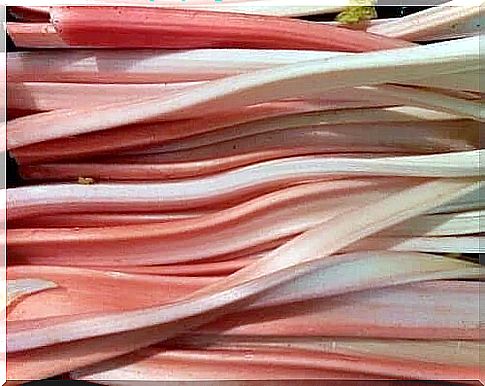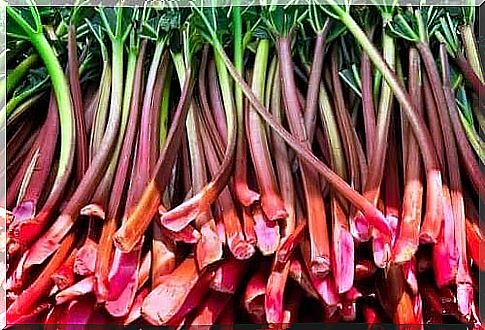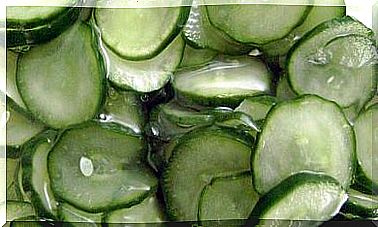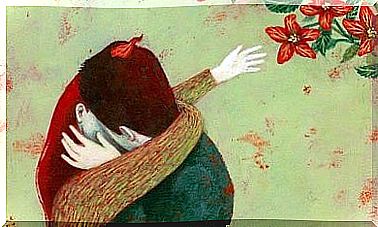Side Effects And Benefits Of Rhubarb

The scientific name of the garden rhubarb is Rheum rhabarbarum. It belongs to the family Polygonaceae. It is edible, and the strain can be used in a wide variety of recipes. Have you ever heard of the health benefits of rhubarb?
In ancient times, rhubarb was used mainly for medicinal purposes (especially its dried roots). Today, people use the stems in sweet soups, jams, sauces, cakes, crumbled dough and wine. It is also the main ingredient in many traditional cakes and pies in the UK and North America.
The nutritional benefits of rhubarb
- C

Health benefits of rhubarb
Let’s see how.
According to a study published in Research in Pharmaceutical Sciences, antioxidants play an important role in preventing chronic diseases. Not only do they reduce the negative effects of free radicals, but they also strengthen the immune system and act as an aid against inflammation.
Rhubarb is a considerable source of antioxidants – even higher than kale, according to a study published in the International Journal of Food, Science & Technology. Specifically, this plant contains anthocyanins, which contribute to cardiovascular, brain and skin health.
Also, a study on mice, published in BioMed Research International, mentions that rhubarb tannins help regulate water absorption in the digestive tract, which prevents diarrhea.
Side effects of rhubarb

In most healthy adults, moderate consumption of rhubarb has no negative consequences. However, we must be clear that it is one of the most significant edible sources of calcium oxalate. This mineral is mainly present in the leaves of this plant. Avoid consuming them.
As mentioned in a report published in BMC Nephrology, too much calcium oxalate can lead to hyperoxaluria, a common cause of kidney stones. In addition, oxalates can lead to kidney failure if not treated properly.
Thus, anyone with kidney problems or a history of kidney stones should avoid eating this vegetable. Also consult your doctor before consuming it regularly if you are undergoing pharmaceutical treatment.
How to take advantage of garden rhubarb









